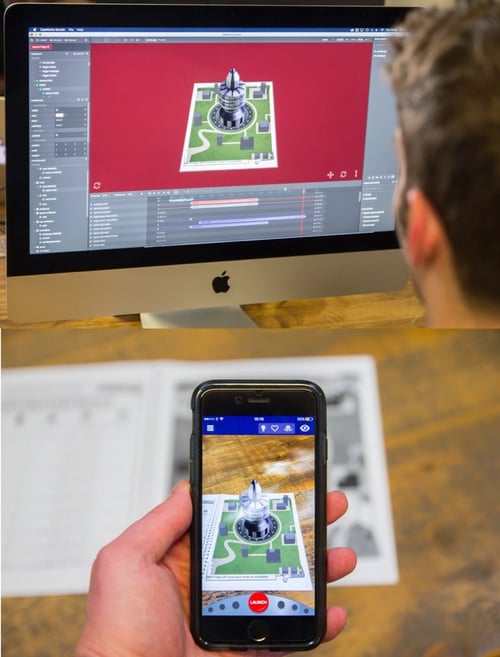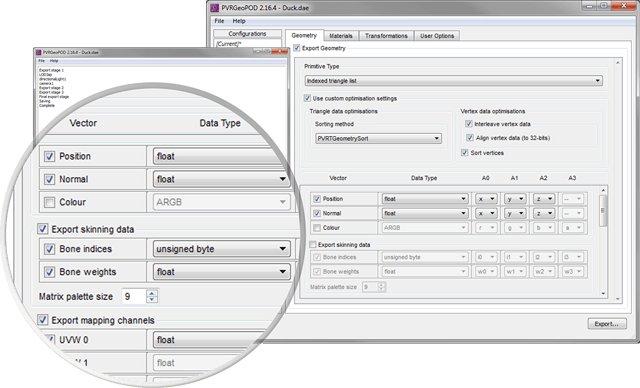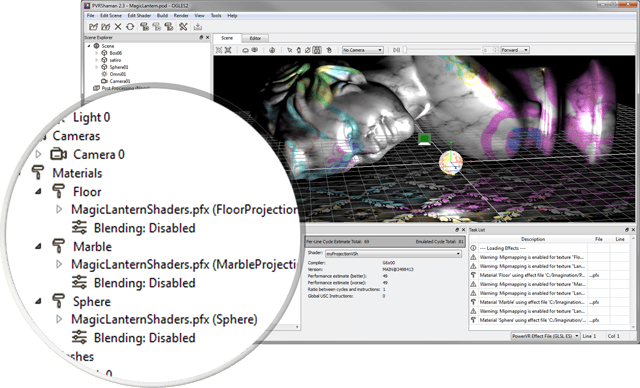- 09 December 2016
- Imagination Technologies
One only needs to look at the success of Pokemon Go to realise that augmented reality (AR) is a big deal. One company that knows this well is Zappar, which is known for creating exciting augmented reality experiences for brands such as Angry Birds, Warner Bros., Coca Cola and many more. These experiences range from bringing posters to life, to crafting a fully 3D interactive, multi-scene AR experience. In this blog post I’ll be talking about how using by using Zappar and Imagination tools, developers can bring these amazing AR and VR experiences to life for end-users.
Zappar’s software offering ZapWorks provides several tools for developers to use to create their own AR and VR content. One of these tools is ZapWorks Studio, a complete toolkit for building 3D augmented or virtual reality experiences. It features powerful animation and timeline tools and with its fully comprehensive JavaScript-based scripting functionality, Studio can generate highly immersive content using 3D models.
One of the formats ZapWorks Studio supports is the PowerVR Object Data (POD) format. This is a lightweight fully optimised deployment format created by us at PowerVR for scene data such as meshes, animations, lights and cameras. It enables artists to export assets into a container that developers can easily import into the graphics APIs.
The POD format is widely used in mobile development due to its flexibility, the great set of accompanying tools, our free-to-use POD loading resource code, and our specification document that simplifies the process of writing custom exporters.
PowerVR Tools for use with Zapworks Studio
PVRGeoPOD is a collection of tools we provide that enable users to export their 3D scenes and associated geometry data into POD format. The PVRGeoPOD package includes plug-ins for the most widely used 3D modelling applications (Autodesk 3ds Max, Autodesk Maya and Blender), as well as a standalone GUI and command-line tools to convert from the Khronos COLLADA interchange format.
PVRShaman is a shader composer that loads POD files and uses the PowerVR Effects (PFX) format to enable rapid prototyping of shaders. PVRShaderEditor is integrated into PVRShaman, allowing users to benefit from syntax highlighting, per-line cycle count estimates and all of the other great features the standalone shader editing tool provides. All of this is done with the addition of a visualization window, enabling users to get instant feedback on any changes made.
ZapWorks Studio
Importing POD files into ZapWorks Studio is a simple process. Just drag the desired POD file into the Media Library import box in ZapWorks Studio or select “Import Media Files”. This creates a new symbol in the Symbol Definitions panel, and presents a set of settings to ensure the model was imported correctly.
ZapWorks Studio uses a tree of nodes in much the same way as the POD format. All nodes in POD files have a position, scale, and rotation. There are a few different types of node such as objects (triangular meshes) and “helpers” such as the skeleton’s bones for skinned characters.
If you’d like to know more you go find very detailed information on how to use ZapWorks Studio with POD format at the Zapworks website.
To find out more about POD and the PowerVR Graphics SDK, download the PowerVR Graphics SDK. Make sure you also follow us on Twitter (@ImaginationTech) and come back to our blog for more articles and announcements related to our PowerVR Graphics SDK.
Further Information









